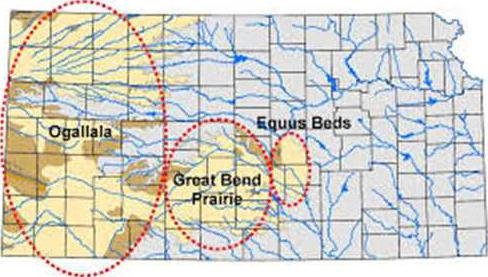

The drought monitor report as of 8 a.m. Tuesday, Nov. 7, shows no real change again for our area this week. We are still in severe drought. The six to ten-day outlook (Nov. 14 to 18) indicates an 80 to 90% chance of leaning above normal for temperatures and normal precipitation. The eight to 14-day outlook (Nov. 16 to 22) indicates a 60 to 70% chance of leaning to above normal temperatures and 40 to 50% chance of above normal for precipitation. Really not the temperature forecast we need for winter wheat development. Hopefully, the above normal precipitation is a reality.
Last week’s column discussed the high nitrate concentration found in private wells in our area. High nitrate concentrations are a very real health concern for everybody but especially for young children and people with certain health conditions. This problem occurs for several reasons including nitrogen fertilizers used in grain production, especially corn, and also from feedlots. The problem is made worse on sandier soils low in organic matter and where the water table is close to the soil surface. Nitrates can also be a concern in surface waters but the problem is exacerbated in groundwater as the temperature is much lower and there is little biological activity. Today, what can be done.
• First, it’s probably a good idea for those with private wells for water to have them checked for the nitrate concentration. Not only, but especially those wells on sandier soils and soils south of the river where the water table is shallower. Also, for wells in close proximity to irrigated corn production, again especially on sandier soils. Groundwater does flow but these would be the most likely wells to start with.
• If you find a problem, there are several options. One, drink and cook with bottled water which can not only be expensive but inconvenient. Two, install a proper filtration system for water used in drinking and cooking. A reverse osmosis system is an example.
• Keep in mind there is no practical way to do anything about the nitrates already there but there are things producers can do that may help over time.
• Producers need to know the amount of nitrogen fertilizer their soils can hold without significant concerns for leaching nitrates. A general rule of thumb is ten times the CEC (Cation exchange capacity, which is basically how much nutrients a soil can hold), which is determined through a simple soil test.
• Time nitrogen fertilizer applications keeping rainfall in mind. Most already do, but split fertilizer applications spread out over the growing season also helps. Irrigators can obtain the necessary credentials and spoon feed nitrogen through irrigation water. This also saves nitrogen.
• And the big one – don’t over-fertilize. First, now the soils organic matter content as it will release nitrogen during the growing season. Also, taking a profile nitrate test at the appropriate time tells a producer how much nitrate is already in the soil. Second, determine realistic yield goals. Producers know this can be dicey depending on the weather. However, we know how much nitrogen it takes to producer a bushel of corn, wheat, or milo. Excess nitrogen application is a major source of this problem and in general producers tend to over-fertilize corn.
Dr. Victor L. Martin is the agriculture instructor/coordinator for Barton Community College. He can be reached at 620-792-9207, ext. 207, ormartinv@bartonccc.edu.





